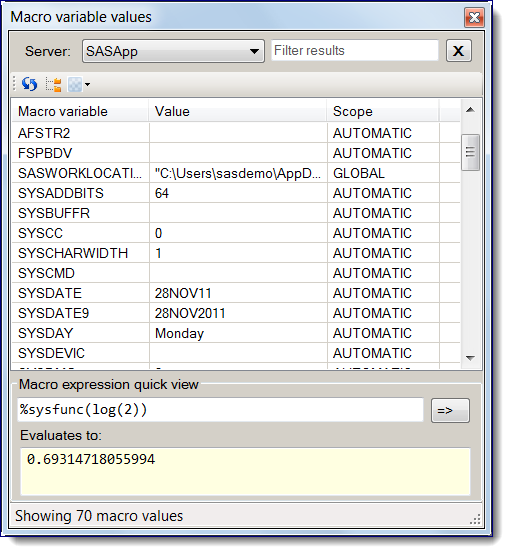
If you use SAS macro variables in your programs (who doesn't?), then the SAS Macro Variable viewer is immensely useful to see current macro var values.

If you use SAS macro variables in your programs (who doesn't?), then the SAS Macro Variable viewer is immensely useful to see current macro var values.

To develop a custom task for use in SAS Enterprise Guide (or SAS Add-In for Microsoft Office), you need a few things: A working knowledge of SAS and SAS Enterprise Guide Microsoft Visual Studio (the free Express edition will do, though the Professional edition is better) Some experience with C#
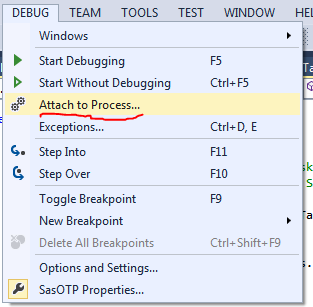
It's true: you can use the Microsoft Visual Studio Express tools to build custom tasks for SAS Enterprise Guide and the SAS Add-In for Microsoft Office. And I said as much in my book, Custom Tasks for SAS Enterprise Guide Using Microsoft .NET. I even provided step-by-step instructions for how
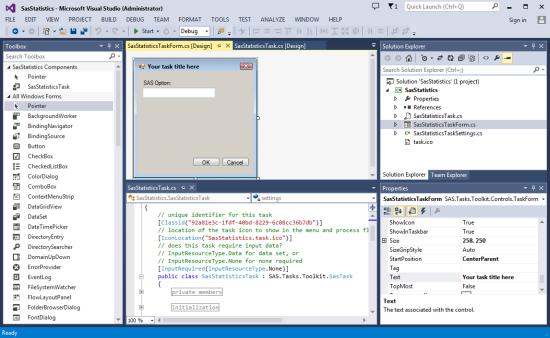
Writing a book about SAS (or any computer software) is both gratifying and frustrating. It's gratifying because there are so many SAS users in the world, and it feels good when you can share your expertise with them. It's also gratifying to have a volume that you can point to
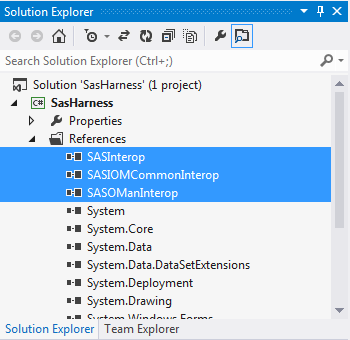
As part of my follow-up to SAS Global Forum 2013, I've posted a few articles about how to create your own client apps with SAS Integration Technologies. This article shows how to use Microsoft .NET -- the same approach used for SAS Enterprise Guide and SAS Add-In for Microsoft Office
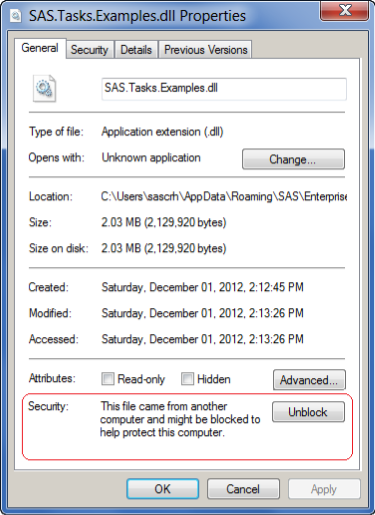
Recent versions of SAS Enterprise Guide (version 5.1 and later) use Microsoft .NET 4.0, which enforces additional security requirements before running custom task DLLs that you download from the Web, including those that you download from support.sas.com. Because these task DLLs are downloaded from the (big and scary) Internet, the
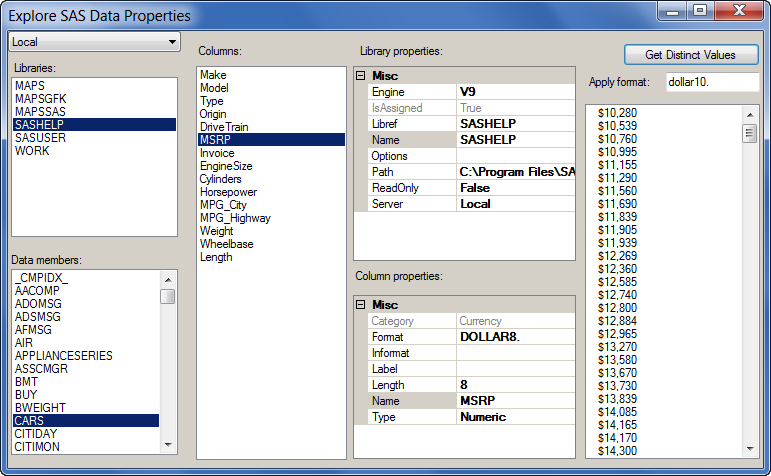
Most custom tasks need to access SAS data in some way. Since custom tasks are built using Microsoft .NET, and the .NET Framework is object-oriented, it would be convenient if we had an object-oriented method for navigating SAS data sources. That was the thinking behind the "SasData"-namespace classes within the
The following is an excerpt from my forthcoming book: Creating Custom Tasks for SAS Enterprise Guide using Microsoft .NET. If your custom task generates a SAS program, the chances are pretty high that your program will reference one or more variables within a SAS data set. Despite our best efforts,
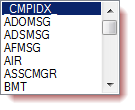
A SAS Professionals attendee and Twitter follower named Marco asks for help: ..struggling to find a method with custom tasks in EG to be able to list the datasets in a library, can you help please? Sure, no problem. This is easy-peasy-lemon-squeezy. First, make sure that you have a reference
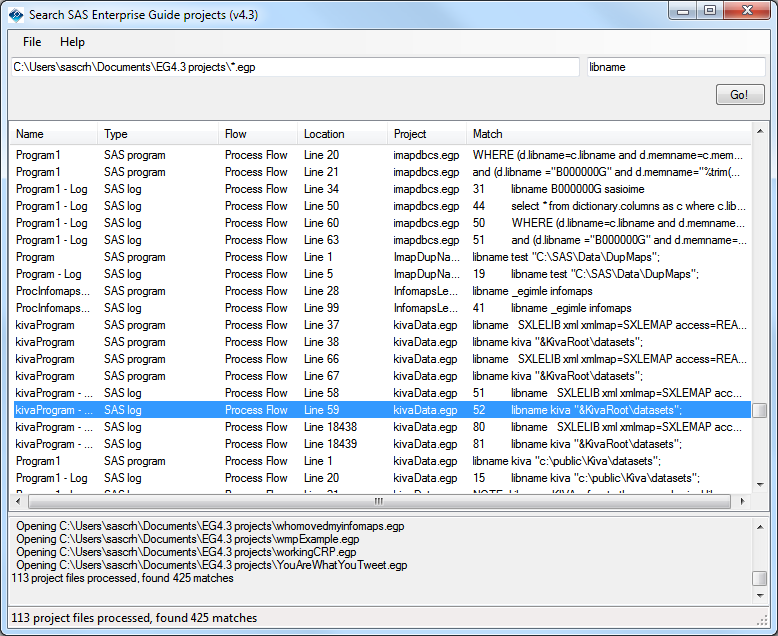
If you are like many SAS Enterprise Guide users, you've amassed a large collection of project files (EGP files) that contain important content: programs, logs, notes, results, and more. However, to most tools and processes, the EGP file is opaque. That is, you can't see what's inside of it unless
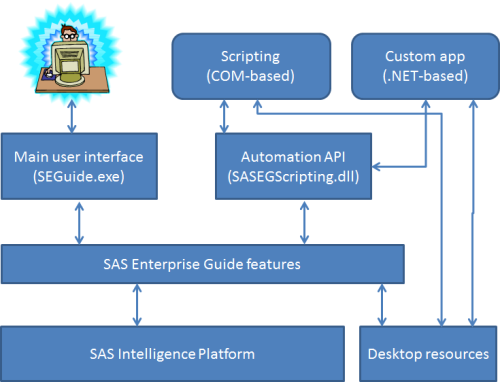
Have you ever selected File->Schedule Project or Schedule->Process Flow in SAS Enterprise Guide? Are you curious about what magic these actions will trigger? Here's what happens: SAS Enterprise Guide creates a VBScript program that contains the instructions to start SAS Enterprise Guide, load your project, run your project or flow,
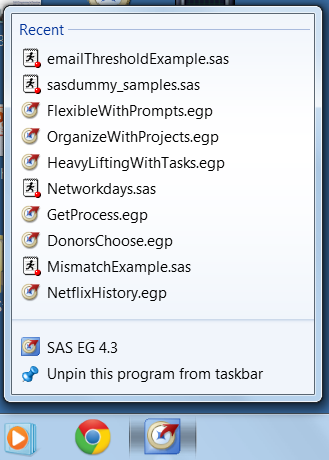
Filed under "Little changes that you probably didn't notice". When Microsoft introduced Windows 7 to the desktop, one of the many usability features that they added were "Jump Lists". Jump Lists serve as a sort of shortcut to not just open an application, but "jump right in" to a particular
I'm not supposed to be working on this blog post right now. I've stayed late at the office under the pretense of working on "the book." It's the book about creating custom tasks for SAS Enterprise Guide, and I've been working on it for quite a while. I enjoy writing
Andy wrote in the NOTE: blog that he's stumbled upon a few custom tasks to extend features in SAS Enterprise Guide. He wondered aloud whether there might be more "free" tasks out there, available for use by anyone who can find them and download them. The answer is: You betcha!*